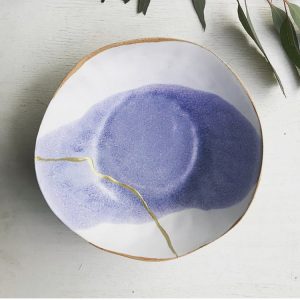
At one point in time everyone wants to be perfect. We compare ourselves to those viewed as the top and yearn to be the same as them. To follow their perfect lines and perfect symmetry to make something “clean” and, in our eyes, “perfect.” However, like many people have told us, nobody’s perfect. While being perfect can be viewed as exquisite and beautiful, so can imperfection. Nature for example is imperfect, but at the same time has its own beauty of imperfection.
The beauty and art of imperfection is known to be a Japanese art, specifically based on nature and the natural cycle of growth, decay, and death. This art is called Wabisabi, Wabi derives from the meaning of root ‘wa’, referring to peace and harmony, and Sabi meaning “flowers of time” referring to the natural flow of time. The combination of the two come together bringing the philosophy of the beauty of imperfection and respect for passage of time. It is the art of undeclared beauty that waits patiently to be discovered.

Picture by www.daisycooperceramics.com
Tracing back the philosophy to its roots, it lies within the Buddhist teachings of the “Three Marks of Existence.” Embracing Impermanence, suffering, and absence of self. Embracing impermanence, is in short, the acceptance that life moves on along with everything within it. Suffering, is the acknowledgment that it is part of the life cycle we live in. Finally, Absence of self, which links back into impermanence in a more self-aware way.
Because of the Media and social influence that is brought to us today, we are also unsatisfied with what we have, always wanting to reach the unattainable level of perfection. However slowly wabisabi has become a sort of aesthetic of imperfection. In a house, for example, the idea becomes about a house being a place to e lived in, therefore why not show the signs of life? Some ideas of achieving this is instead of buying plastic cheaply made items, invest in goods that last and grow along with you overtime. Things like scratches can add a narrative to the object’s history along with your own. Buying used objects can also be an excellent way to save money, reduce consumption, and appreciating the life that time and nature has to offer to us.
In this blog I will be discussing about the different types of architecture and architectural theories that revolve around the world.
2 Comments
I totally agree with you .. It's like "your opinion is my opinion" ahahahah. What about gaming, is this site really very profitable?
I realized for myself a long time ago that you need to have an additional income that does not depend on your main job, so you can live quietly and without stress, I read about it in click the next page so well describe the options for additional earnings with minimal effort
Block this user
Are you sure you want to block this user and hide all related comments throughout the site?
Archinect
This is your first comment on Archinect. Your comment will be visible once approved.